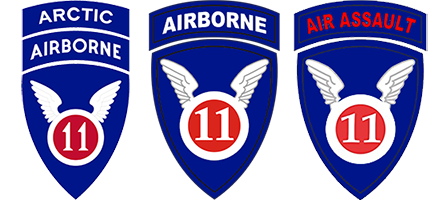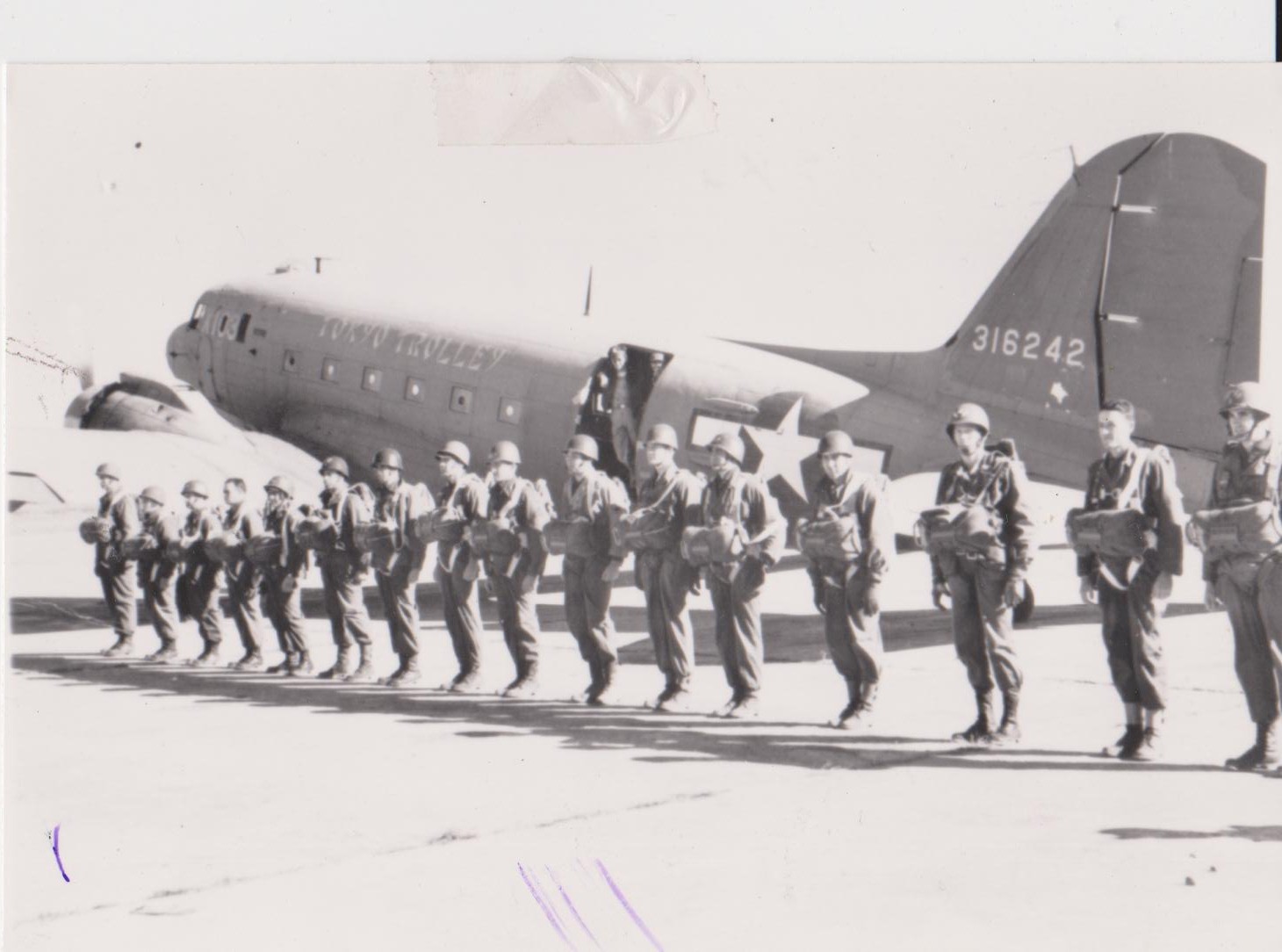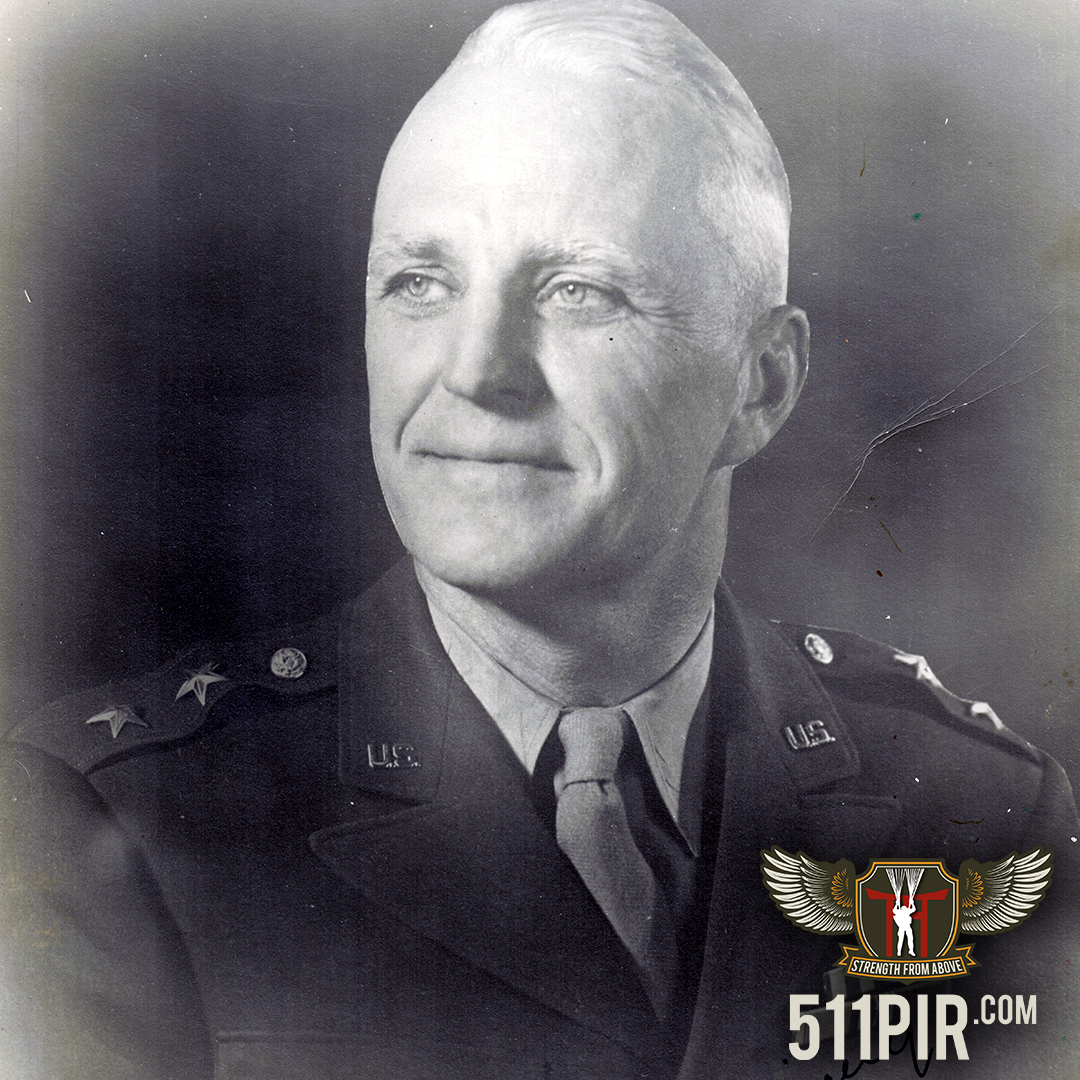 With the 82nd and 101st ABDs already established, on November 24, 1942 the War Department authorized the creation of a third airborne division to be numbered the 11th under forty-seven-year-old then-Brig. Gen. Joseph May Swing. Hailing from Jersey City, the Hollywood-looking Swing graduated from the United States Military Academy in 1915, “the class the stars fell on”, alongside his roommate and football teammate Dwight Eisenhower (Omar Bradley also played with them under head coach Charles Dudley Daly).
With the 82nd and 101st ABDs already established, on November 24, 1942 the War Department authorized the creation of a third airborne division to be numbered the 11th under forty-seven-year-old then-Brig. Gen. Joseph May Swing. Hailing from Jersey City, the Hollywood-looking Swing graduated from the United States Military Academy in 1915, “the class the stars fell on”, alongside his roommate and football teammate Dwight Eisenhower (Omar Bradley also played with them under head coach Charles Dudley Daly).
Swing served as a 2nd Lieutenant under Gen. “Black Jack” Pershing in Mexico during the “Punitive Expedition” against Pancho Villa in the 4th Field Artillery. When America entered World War I, he served in France with the 8th Field Artillery under Gen. Payton C. March before returning stateside to graduate with honors from Fort Hood’s field artillery school in 1926. Swing taught at Hood until 1931 when he entered Washington’s Army War College until 1935 then bounced between units from 1935-1942 before he was assigned command of the 82nd Infantry Division’s (later Airborne) artillery where he helped his old teammate Brig. Gen. Omar Bradley organize the division’s units. Then, given his penchant for daring leadership, Swing was given command of the new 11th Airborne at Camp Mackall in November of 1942 and promoted to Major General.
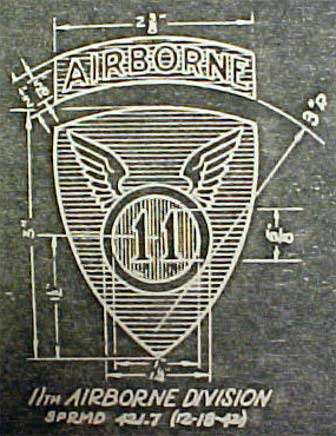 During a meeting in Washington, D.C., Swing presented his idea for the new division’s shoulder patch, a blue shield with white wings crested around a red circle and the number 11, to Col. Francis W. Farrell, his Chief of Staff, and BG Albert Pierson, his assistant division commander. Both enthusiastically approved and the 11th Airborne’s iconic “Angel” emblem was created.
During a meeting in Washington, D.C., Swing presented his idea for the new division’s shoulder patch, a blue shield with white wings crested around a red circle and the number 11, to Col. Francis W. Farrell, his Chief of Staff, and BG Albert Pierson, his assistant division commander. Both enthusiastically approved and the 11th Airborne’s iconic “Angel” emblem was created.
What Colonel Orin D. “Hard Rock” Haugen’s troopers in the 511th PIR called the symbol, however, is unprintable.
Unlike many other airborne “brass”, the piercingly blue-eyed Swing elected to complete all five of his training jumps (Gens. Matthew Ridgeway and Maxwell Taylor only completed one or two before entering combat). In another change from existing airborne formats, Swing’s 11th ABD reversed the ratio of glider-to-parachute regiments with two of the former and only one of the latter, the 511th PIR.
With twenty-seven years of military service, the prematurely grey-haired Swing set out to organize the 11th Airborne into America’s finest fighting unit. Since Swing believed the maxim, “Give a man a job and let him do it”, he kept his officers busy prepping the area.
As men began arriving in February of 1943, Swing’s staff organized Basic Training for those fresh from civilian life. The recruits were met at the train station and trucked to camp for classification. Volunteers for parachute duty were assigned to parachute units, including the field artillery, medical, signals, etc., while all others were sent to the gliders. More than one set of blurry eyes shot open when the cadre explained they were headed for an airborne unit. This led to a central distinction between the parachute troops and glider soldiers. The first were hand-picked volunteers while the second was a conglomeration of recruits. Both groups cursed the desk jockeys who chose this miserable unfinished camp for their assignment and many later said they would rather be in combat than at Mackall.
The 11th Airborne’s T/O came to include:
- 11th Airborne Division, Headquarters
- 11th Airborne Division, Headquarters Company
- 11th Airborne Division, Military Police Platoon
- 408th Airborne Quartermaster Company
- 511th Airborne Signal Company
- 511th Parachute Infantry Regiment
- 711th Airborne Ordinance Maintenance Company
- 221st Airborne Medical Company
- 127th Airborne Engineer Battalion
- 152nd Airborne Antiaircraft Battalion
- 457th Parachute Field Artillery Battalion
- 674th Glider Field Artillery Battalion
- 675th Glider Field Artillery Battalion
- 187th Glider Infantry Regiment
- 188th Glider Infantry Regiment
After liberating Leyte and Luzon, the 11th Airborne Division became the first full foreign unit to occupy Japan in the country’s long history after receiving 13 Unit Citations, 3 battle stars, 2x Medals of Honor, 9x Distinguished Service Crosses, 432x; Silver Stars, 10x Legion of Merit medals, 56x Soldiers Medals, 1,515x Bronze Star Medal and 41x Air Medals.
In 1949 the 11th AB was recalled to the United States, where it became a training formation. One parachute infantry regiment (the 187th) was detached for service in the Korean War, but on 30 June 1958 the division was inactivated.
The division was briefly reactivated on 1 February 1963 as the 11th Air Assault Division (Test) to explore the theory and practicality of helicopter assault tactics, and was inactivated on 29 June 1965. The division’s personnel and equipment were transferred to the newly raised 1st Cavalry Division (Airmobile).
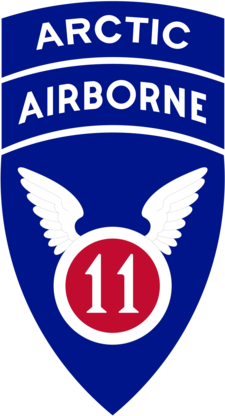 In a May 5, 2022 Senate Armed Services Committee hearing, Secretary of the Army Christine Wormuth announced that in the summer of 2022, the U.S. Army Alaska headquarters would be redesignated as the 11th Airborne Division, and the two Brigade Combat Teams in Alaska, the 1st Brigade Combat Team and 4th Brigade Combat Team, 25th Infantry Division, would be redesignated as the 1st and 2nd Infantry Brigade Combat Team of the 11th Airborne Division.
In a May 5, 2022 Senate Armed Services Committee hearing, Secretary of the Army Christine Wormuth announced that in the summer of 2022, the U.S. Army Alaska headquarters would be redesignated as the 11th Airborne Division, and the two Brigade Combat Teams in Alaska, the 1st Brigade Combat Team and 4th Brigade Combat Team, 25th Infantry Division, would be redesignated as the 1st and 2nd Infantry Brigade Combat Team of the 11th Airborne Division.
On June 6, 2022, the 11th Airborne Division’s 1st Brigade was re-activated at Fort Wainwright and the division’s 2nd Brigade at Fort Richardson in separate ceremonies.
More division history will be added soon! In the meantime, please enjoy the videos below provided by author and historian Jeremy C. Holm on the 11th Airborne in World War II:
